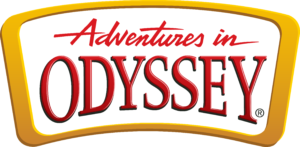In his opening monologue, Eugene Levy (cohost of the 76th Emmy Awards) said that the Emmys were “broadcast TV’s biggest night for honoring movie stars on streaming services.”
Well, that’s only partially true.
Some movie stars unexpectedly lost during Sunday’s award show: Meryl Streep and Robert Downey Jr. were both nominated; both were heavy favorites; and both walked away empty-handed.
But streaming services shared the stage with cable networks. And traditional broadcast television—CBS, ABC, NBC, Fox and the CW—didn’t score a single victory on Sunday’s telecast. Not one. Only one scripted show—ABC’s Abbott Elementary—was even nominated.
And that’s not just bad news for those networks. It’s bad news for families, too.
First, let’s mention the winners.
FX’s Shōgun collected four statuettes Sunday night, including one for best drama series, best dramatic actress (Anna Sawai) and best dramatic actor (Hiroyuki Sanada). Add in the Emmys given out the day before (which weren’t part of the telecast) and Shōgun carted home 14 wins.
Fellow FX show The Bear scored 11 wins between Saturday and Sunday—a record for any comedy series. But HBO’s Hacks upset The Bear for Outstanding Comedy Series, and Jean Smart earned yet another Emmy as best comedic actress. (She’s won three such statuettes for her work in Hacks and six overall.)
Meanwhile, the semi-autobiographical Baby Reindeer, streaming on Netflix, took home the award for Outstanding Limited or Anthology Series, along with three other wins on Sunday.
But these shows share more than just some nice hardware. They also share this: a TV-MA rating.
The MA brand signifies that the shows are for “mature audiences” only, essentially the TV equivalent of an R-rating (or worse). And while these ratings are selected by the creators themselves (making them a tad more unreliable than the movie industry’s independently-rated MPA ratings), they’re certainly an indication of the level of content viewers can expect.
And when we say these shows carry the equivalent of an R-rating, let me caution further: These shows are often harsher, and significantly so, than their typical R-rated film brethren. Certainly much more explicit than anything you might see on broadcast TV.
Because of their age-old charter and historical reach, broadcast shows are designed for a wider audience. They censor the harshest profanities. Sensitive body parts are (typically) covered. While many certainly have their own set of problems, they tend to be more family friendly than their cable and streaming peers, which have no such restrictions. So when cable and streaming services dominate the Emmys, there’s a good chance that problematic content is the night’s biggest winner.
Certainly, we’ve followed this trend for a while. Across the world of entertainment, mature content often seems to be paired, ostensibly, with aesthetic excellence. But it need not be so. The Academy Awards, at least, acknowledge every year that the quality of a movie isn’t synonymous with its quantity of objectionable content. Of the nine Best Picture nominees for this past year’s Oscars, three of them—Past Lives, The Zone of Interest and Barbie—were rated PG-13.
But in the increasingly crass world of television, its most-honored shows are among its most foul. All eight shows nominated for Outstanding Drama Series this year were rated TV-MA.
That’s too bad. The Emmys might not acknowledge it, but the small screen does harbor some pretty good shows that don’t necessarily pepper you with problems. And we’ll continue to call them out here at Plugged In.








6 Responses
I miss the good old days of shows like Full House, The Golden Girls, Home Improvement, Everybody loves Raymond, Touched by an angel, Doc, Early Edition, ER, Judging Amy and such.
Nowadays I tend to watch the Disney Channel more often than not, as well as the Food Network and shows like Survivor, Big Brother and Beat Shazam, though I am looking forward to the continuation of Young Sheldon through Georgie and Mandy, and of course Ghosts.
“Of the nine Best Picture nominees for this past year’s Oscars, three of them—Past Lives, The Zone of Interest and Barbie—were rated PG-13.”
It’s interesting that you point this out since a lot of the strongly graphic content (notably the language and sexual content, particularly the former) in Oppenheimer could have been readily omitted or kept offscreen if it’d wanted a PG-13 rating, without sacrificing any of the underlying story. There was one specific scene on that note that I thought was very well done, but speaking strictly pragmatically, it’s very rare that Christopher Nolan makes R-rated films — even Dunkirk, which had much more violence while Oppenheimer despite its context had very little, felt relatively restrained. (The strong language also felt like a bizarre inclusion in Guardians of the Galaxy 3 from earlier that same year.)
There’s a reason for this. The Emmys are trying to move you away from broadcast TV (which is free) and towards streaming services (which cost money in most cases). The highest rating shows on broadcast TV usually get is TV-14, so the streaming services are working to differentiate themselves by showcasing content with the TV-MA rating. And the Emmys are helping them out by making the TV-MA shows appear more “mature” and “sophisticated” than shows with lower age ratings.
Whenever you create a clear distinction between high-quality and low-quality products, and then put up barriers or create restrictions to stop people from accessing the high-quality products, the people who agree with that distinction are the people most likely to bypass those barriers and/or violate those restrictions.
The video/computer game industry does the exact same thing. If a game is expected to be rated T or M by the ESRB, the game studio will bless its developers with the highest development budget possible. But if your game is expected to be rated E or E10+, the developers will oftentimes get much less resources to work with (unless they have the blessing of a national sports league such as NASCAR, the NFL, the NBA, the NHL, the NCAA, or the MLB, or they have the blessing of car manufacturers for making a racing game). That means E or E10+ rated games often have lower-quality art, less replay value, and less advertising. Worse, the developers often face ridicule for working on what are seen as “shovelware” or “kiddie games”.
Even the alcoholic beverage industry does this. By calling alcoholic beverages “adult beverages”, you imply that any and all beverages that do not contain alcohol are “kiddie beverages”. The most stigmatized non-alcoholic beverage is milk, because lots of people think “milk is for babies”.
There are those who sincerely believe shows, movies and games with the highest age restrictions are the best the entertainment industry has to offer. And there are also teenagers and adults who prefer shows, movies and games with lower age ratings, but keep their preferences a secret for fear of social ridicule. Here’s a quote from Roger Ebert about this issue, which he made reviewing the 2003 documentary Spellbound:
“In talking with high school kids, I find that many of them go to good or serious movies by themselves, and choose vulgarity and violence when going with their friends. To be a kid and read good books and attend good movies sets you aside. ”
You should consider tracking down and interviewing high school students who are like this. That could give kids and adults a lot of helpful insights. If kids want to watch R-rated movies or TV-MA rated shows or play M-rated games just to fit in, but don’t really enjoy them that much, you might be able to stop them from doing so by proving that they’re not alone. Now if they sincerely enjoy watch R-rated movies or TV-MA rated shows or M-rated games, then you have a much more serious problem on your hands.
Interesting observations. This is why I’ve long been concerned about whenever the current fad is geared toward adults. When we were in middle/high-school, my peers tried to pressure me into watching South Park or The Matrix movies, neither of which were allowed for me – and I think in hindsight that my parents were right to limit both even if they didn’t really holistically explain “why” at the time. Even some of the Marvel movies wouldn’t really be suited for a young audience, such as Winter Soldier or the automatic-weapon scene at the beginning of the first Black Panther movie.
I feel for teens from ~a decade ago who would have been pressured into reading or watching A Song of Ice and Fire. It reminds me of Dead Space 2’s “your mom hates this” marketing campaign: If you have to ask permission, you’re not old enough
Thanks for backing me up. A lot of kids see parents who bar them from seeing R-rated movies or TV-MA rated shows or playing M-rated games as being mean or violating their First Amendment rights. Those kids need to be taught what true meanness is. Also, I think if our Founding Fathers are looking down on America from Heaven, and seeing how bad things have gotten, they may be wishing they wrote the United States Constitution very, very differently.
A lot of people perceive watching your first R-rated movie or TV-MA rated show or playing your first M-rated game as a transition point, a milestone, a rite of passage. So why not complete that rite of passage as soon as you get a chance? That may be due to the fact that a lot of formal initiation rites that marked the passage from childhood to adulthood have been eliminated, and those that remain do not feel very initiating, if you know what I mean.
Here’s a question I would like to ask. When parents decide to watch an R-rated movie but bar their children from watching it with them, what message does that send? In my opinion, it turns watching R-rated movies into a status symbol, which is exactly what the movie industry wants. And the children do not feel protected, but feel that their parents are just trying to push them away.
I think you are onto something about the status symbol. We are in a time when it is economically harder for an 18y.o. to afford to move out and prove he or she is mature and responsible. Handling “mature” content is seen as a proof, while the movies that should be promoted as “adult” should be things with philosophically intricate plots. There are times when it can be both such as the Matrix movie.
I was homeschooled and I had to get permission to watch any movie that was rated PG or higher unless it was a Christian movie, which sounds excessive now, but the MPAA was more likely to give G ratings back then. However, my mom basically held herself to the same rules, which as you pointed out, changes how teens view restrictions.
I have watched movies that were popular that I missed out on at the time: Pirates of the Caribbean, National Treasure, Harry Potter, and the Tobey Maguire Spider-Man movies. I don’t think me waiting ruined the movies, although it was frustrating to miss out on understanding cultural references/slang as a teen.